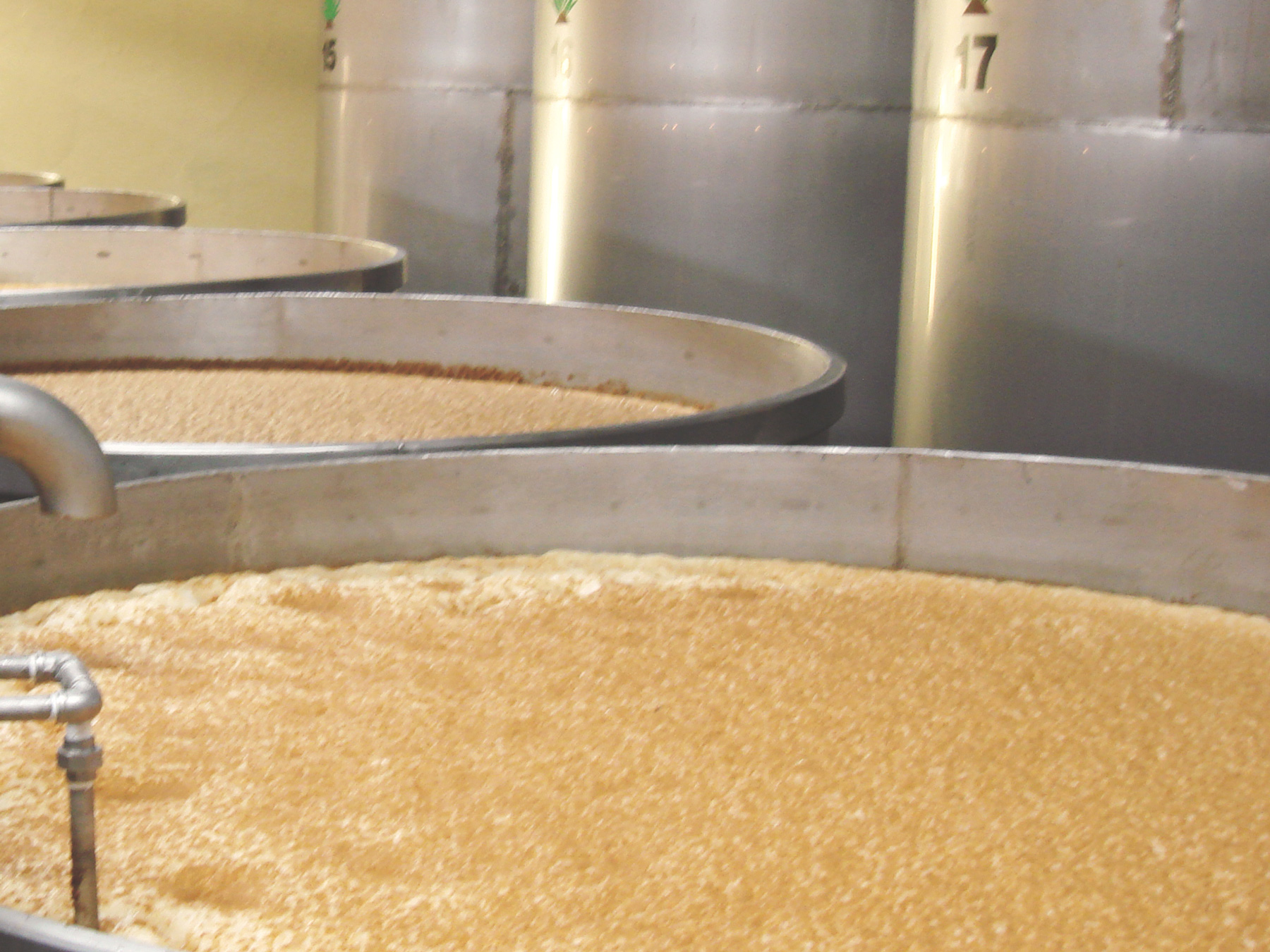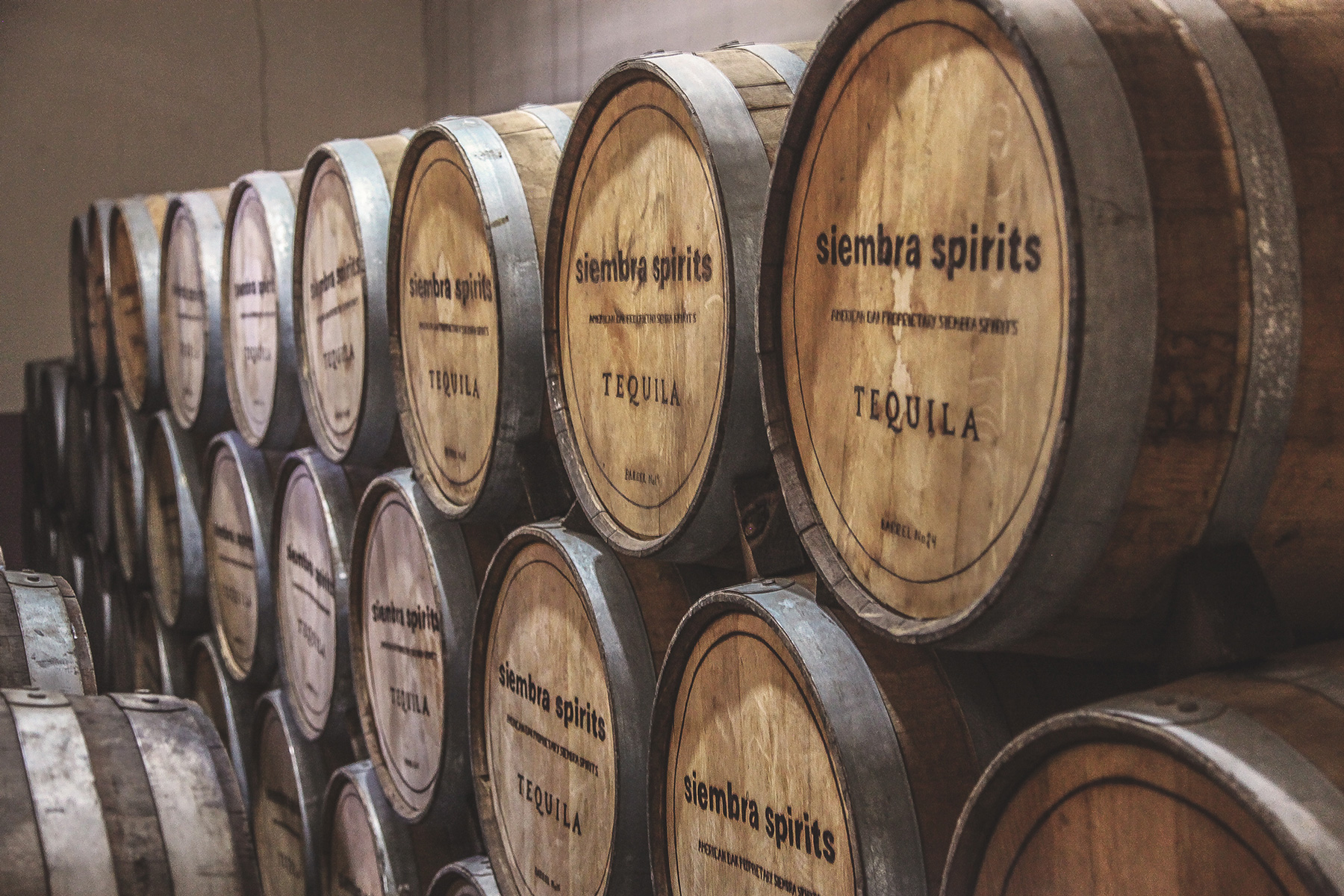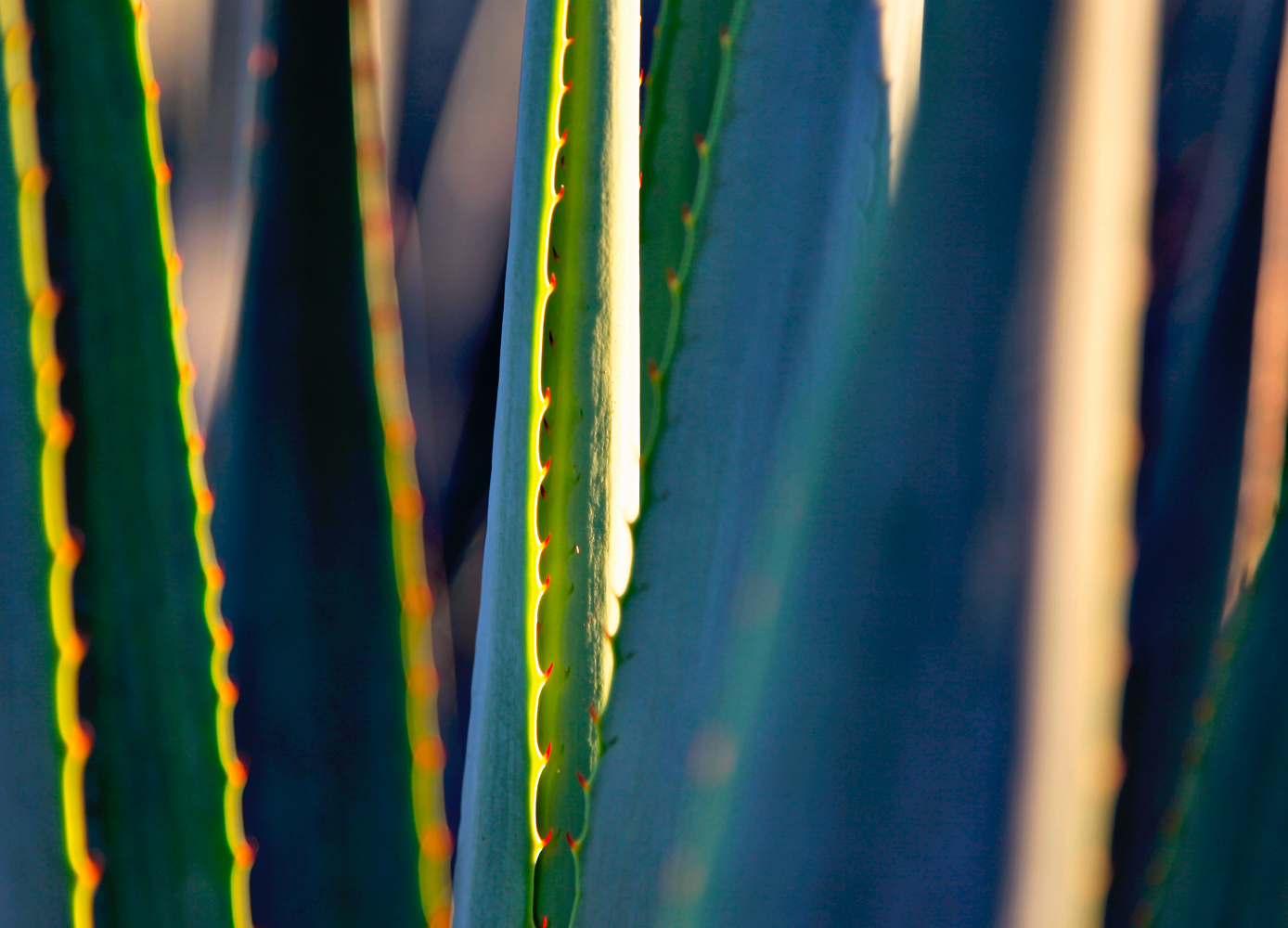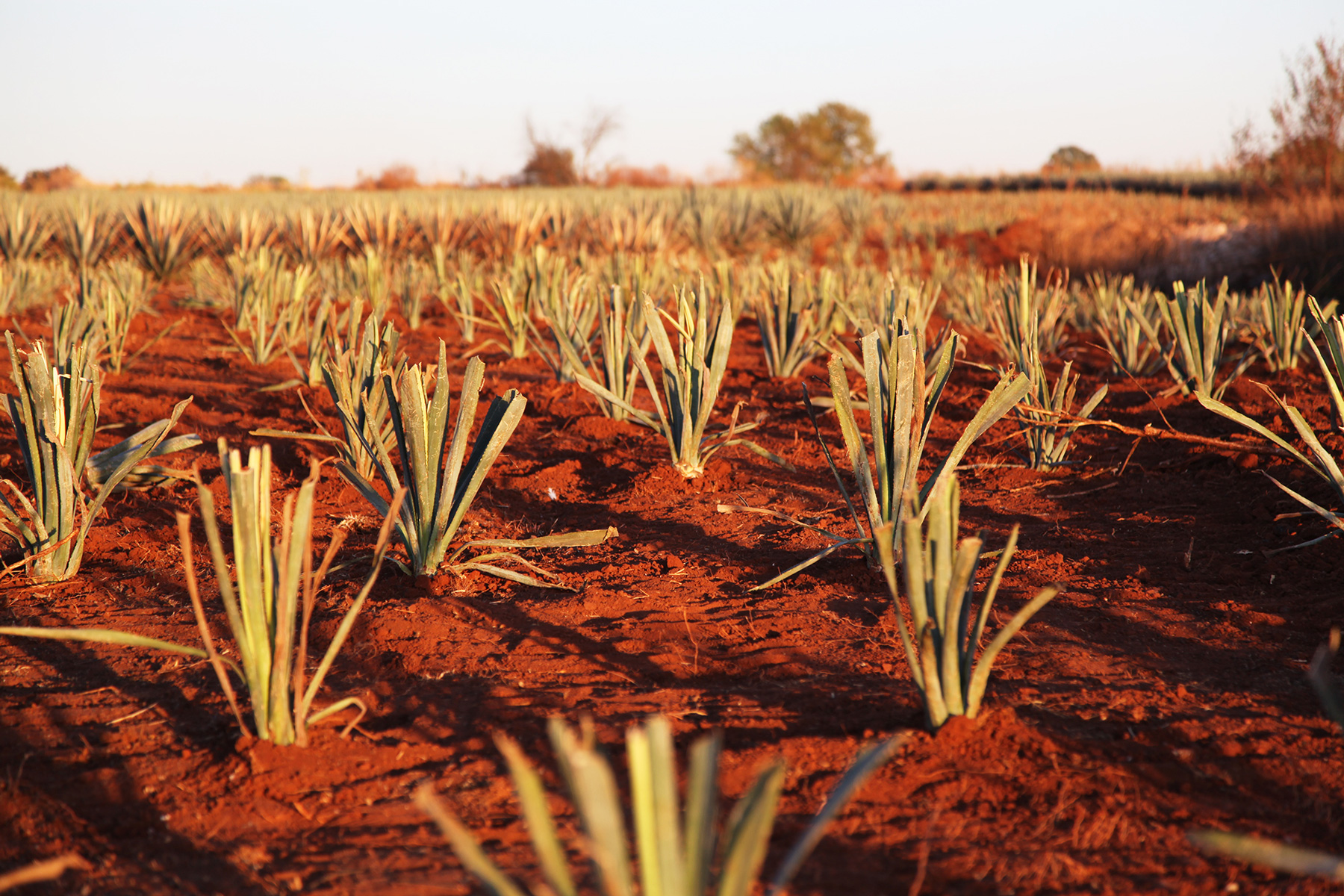
This reposado features the American oak barrels that started it all, inside and out. The background pays homage to the plateau that lifts the highlands region some 8,000 feet above sea level.

This reposado features the American oak barrels that started it all, inside and out. The background pays homage to the plateau that lifts the highlands region some 8,000 feet above sea level.
Production
Process is paramount
We embrace traditional methods and reject additives and shortcuts. We hope you enjoy the result.
Roasting
Brick Oven
A room-sized, wood-fired oven that is filled with agave and heated for days. The use of brick ovens is a hallmark of traditional tequila production, and the aromas are incredible. We never use diffusers or autoclaves because we care about tequila and the earth.


Roasting
Brick Oven
A room-sized, wood-fired oven that is filled with agave and heated for days. The use of brick ovens is a hallmark of traditional tequila production, and the aromas are incredible. We never use diffusers or autoclaves because we care about tequila and the earth.

Extraction
Roller Mill
Hand-operated mills that tear roasted agave fibers as distillers turn a crank, coaxing the fermentable sugars out of the agave.
We focus on traditional production, and this is a good balance between tradition and tech.

Extraction
Roller Mill
Hand-operated mills that tear roasted agave fibers as distillers turn a crank, coaxing the fermentable sugars out of the agave.
We focus on traditional production, and this is a good balance between tradition and tech.
Fermentation
Steel – Induced
Siembra Azul fermentation, like every tequila made at NOM 1414, is serenaded by classical music. The yeast, which is specially designed for tequila production (hence Induced), seems to respond to the rhythm as it bubbles in large steel tanks. It’s not exactly traditional, but the yeast is having a good time.


Fermentation
Steel – Induced
Siembra Azul fermentation, like every tequila made at NOM 1414, is serenaded by classical music. The yeast, which is specially designed for tequila production (hence Induced), seems to respond to the rhythm as it bubbles in large steel tanks. It’s not exactly traditional, but the yeast is having a good time.

Distillation
Copper
Copper stills are the gold standard for tequila distillation and one of the major reasons that Siembra Azul tequilas are often noted as tasting “clean.” Copper wicks out sulfur compounds in distillation, allowing more delicate flavors to surface on the palate.

Distillation
Copper
Copper stills are the gold standard for tequila distillation and one of the major reasons that Siembra Azul tequilas are often noted as tasting “clean.” Copper wicks out sulfur compounds in distillation, allowing more delicate flavors to surface on the palate.
Aging
50% of this reposado is Siembra Azul, aged for less than a year in Siembra’s American oak barrels. 50% of this reposado is Viva México, aged for less than a year in Kentucky Bourbon barrels. In an effort to preserve our flavor profiles, Siembra barrels only ever touch Siembra.


Aging
50% of this reposado is Siembra Azul, aged for less than a year in Siembra’s American oak barrels. 50% of this reposado is Viva México, aged for less than a year in Kentucky Bourbon barrels. In an effort to preserve our flavor profiles, Siembra barrels only ever touch Siembra.
Cultivation
The first several years of your spirits’s life.
Flavors and character develop for years in the fields. Expert jimadores sow and tend agave until its mature and then deftly harvest for a traditional production. Siembra means sowing.
100% Agave Tequilana Weber Azul
Also called “Blue Agave.” Known for high sugar content, relatively fast maturity, easy cloning, and beautiful blueish spikes. Due to restrictive legislation, this is the only agave allowed in tequila production.


100% Agave Tequilana Weber Azul
Also called “Blue Agave.” Known for high sugar content, relatively fast maturity, easy cloning, and beautiful blueish spikes. Due to restrictive legislation, this is the only agave allowed in tequila production.

Estate grown
The agave for this expression was grown on land owned by the producer. This eliminates the need for coyotes, who are often contracted to source harvested agave and are known to exploit jimadores and damage the agave market.

Estate grown
The agave for this expression was grown on land owned by the producer. This eliminates the need for coyotes, who are often contracted to source harvested agave and are known to exploit jimadores and damage the agave market.
Single Estate
Every agave used in both of this expression’s constituent tequilas was grown on the same plantation. The terroir presents differently after their respective productions, but the blend is a layered experience in the terroir of that single plantation, La Poblada.


Single Estate
Every agave used in both of this expression’s constituent tequilas was grown on the same plantation. The terroir presents differently after their respective productions, but the blend is a layered experience in the terroir of that single plantation, La Poblada.

Registration #
Traceability protects your glass from counterfeit tequila. Demand it.
A grower must register agave within one year of planting to sell it to the tequila industry. The registry is meant to guarantee that the agave was grown in the Denomination of Origin, and tells us how much usable agave should be on the market, or will be in a few years.
We print agave registration numbers to show consumers that it’s possible, and something they can and should demand.

Registration #
Traceability protects your glass from counterfeit tequila. Demand it.
A grower must register agave within one year of planting to sell it to the tequila industry. The registry is meant to guarantee that the agave was grown in the Denomination of Origin, and tells us how much usable agave should be on the market, or will be in a few years.
We print agave registration numbers to show consumers that it’s possible, and something they can and should demand.
Planting and Harvest
We’re picky. Mature agave is central to traditional tequila production; years of maturation impart great depth of flavor. Some newer production methods can mask younger, lower-quality agave. Our agave-centric methods demand great raw material.


Planting and Harvest
We’re picky. Mature agave is central to traditional tequila production; years of maturation impart great depth of flavor. Some newer production methods can mask younger, lower-quality agave. Our agave-centric methods demand great raw material.

Jima Type
This refers to how close to the piña the jimadores chop the agave’s spikes. A jima larga leaves more penca, or spike, than a jima normal, which in turn leaves more than jima rasurada, which leaves essentially none. Larga is common in diffuser tequilas, normal in traditional tequila production, and rasurada in ancestral mezcal.

Jima Type
This refers to how close to the piña the jimadores chop the agave’s spikes. A jima larga leaves more penca, or spike, than a jima normal, which in turn leaves more than jima rasurada, which leaves essentially none. Larga is common in diffuser tequilas, normal in traditional tequila production, and rasurada in ancestral mezcal.
People
Terroir is deeper than soil. From fields to distillery, everyone who interacts with our materials and spirits imparts their unique contribution— the human aspects of terroir. Here are a couple names we think you should toast.

Lead Jimador
Silverio Aceves & José Luis Serrano
The jimador culture of the Highlands is hundreds of years younger than its lowlands counterpart, but in its time the Highlands have become the most active agave region in Mexico. Agave from tequila’s “Golden Triangle,” three highlands areas connected by their exquisite agave output, require highly specialized jimadores to maximize that agave’s quality.
These jimadores are experts on all things agave.

Lead Jimador
Jose Romero
Agave harvesters, called jimadores, are the hardest working people in tequila. They generally work in teams of four, called cuadrillas, expertly harvesting 20 to 40 tons of agave per day by hand. They are paid about $3.70 US per ton, which immediately sells for $1,400.
Jose Romero proudly leads this cuadrilla, who are all blood related.
Master Distiller
Sergio Cruz
The Chef de Cuisine of tequila production. M.D.s oversee every aspect of production at the distillery, and are true masters of their craft.
Sergio Cruz, M.D. Ing. and Siembra Azul entered the tequila arena around the same time, and have grown into themselves together. Sergio is deeply committed to quality tequila, and he’s a talented innovator to that end. He’s responsible for some of the best tequilas in the Highlands region today.
Master Distiller
Sergio Cruz
The Chef de Cuisine of tequila production. M.D.s oversee every aspect of production at the distillery, and are true masters of their craft.
Sergio Cruz, M.D. Ing. and Siembra Azul entered the tequila arena around the same time, and have grown into themselves together. Sergio is deeply committed to quality tequila, and he’s a talented innovator to that end. He’s responsible for some of the best tequilas in the Highlands region today.
Why So Much Info?
Production methods vary widely in tequila, and they impact sensitive ecosystems, the health of the industry and labor, and most certainly flavor. Informed consumers can seek out better tasting spirits that are better for the world.
Why So Much Info?
Production methods vary widely in tequila, and they impact sensitive ecosystems, the health of the industry and labor, and most certainly flavor. Informed consumers can seek out better tasting spirits that are better for the world.
We write our methods on every bottle
We share this information so consumers can seek out better tasting spirits that are better for the world. We’re the only brand that does all this, but we hope that soon enough there will be more.



